20. Rice terraces of Yamakoshi
The original scenery of a beautiful Japanese town
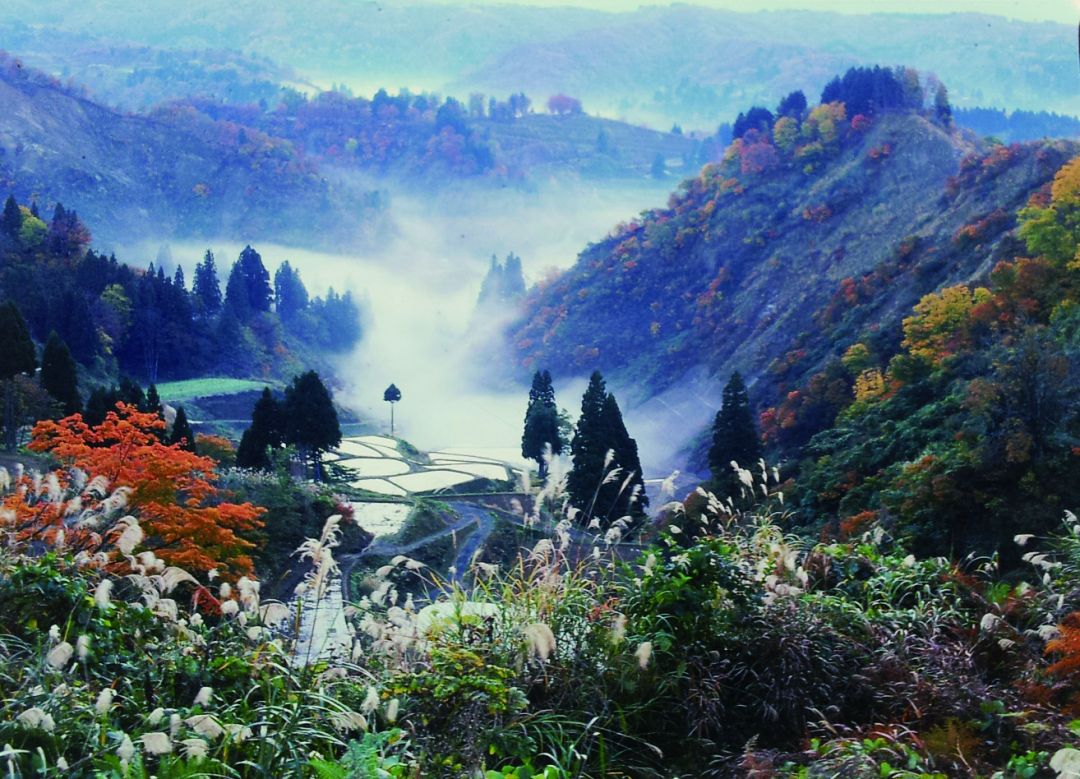
Rice terraces of Yamakoshi that line up like stairs on the slopes of the mountains.
It has been created through the hard work of our predecessors, such as clearing the limited mountain slopes, securing water sources, and carrying all the tools, fertilizers, and harvested rice on our backs.
When the rice planting is finished in the middle of May, the fry of Nishikigoi are released into the shelf pond, and the most beautiful season of the year begins.
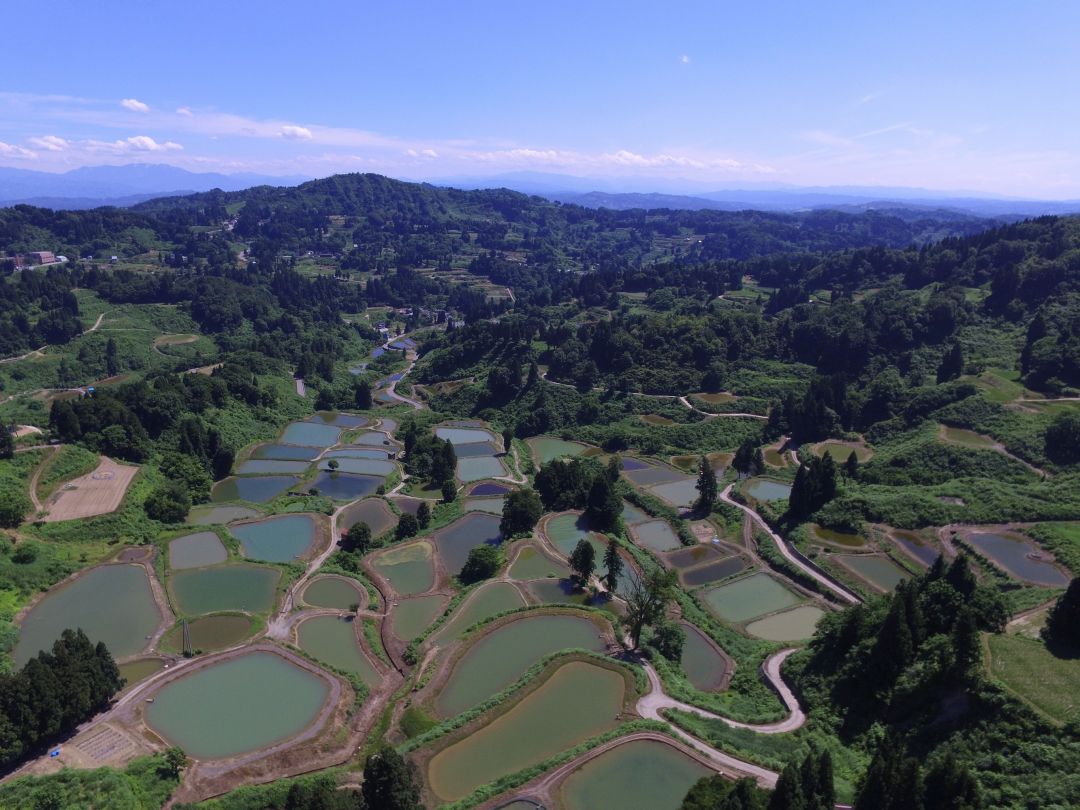
On June 12, 2003, it was selected as an important area of cultural landscape related to agriculture, forestry and fisheries by the Agency for Cultural Affairs.
In 2017, it was also certified as the first Japanese agricultural heritage site as a "rice farming and carp raising system that utilizes the blessings of snow."
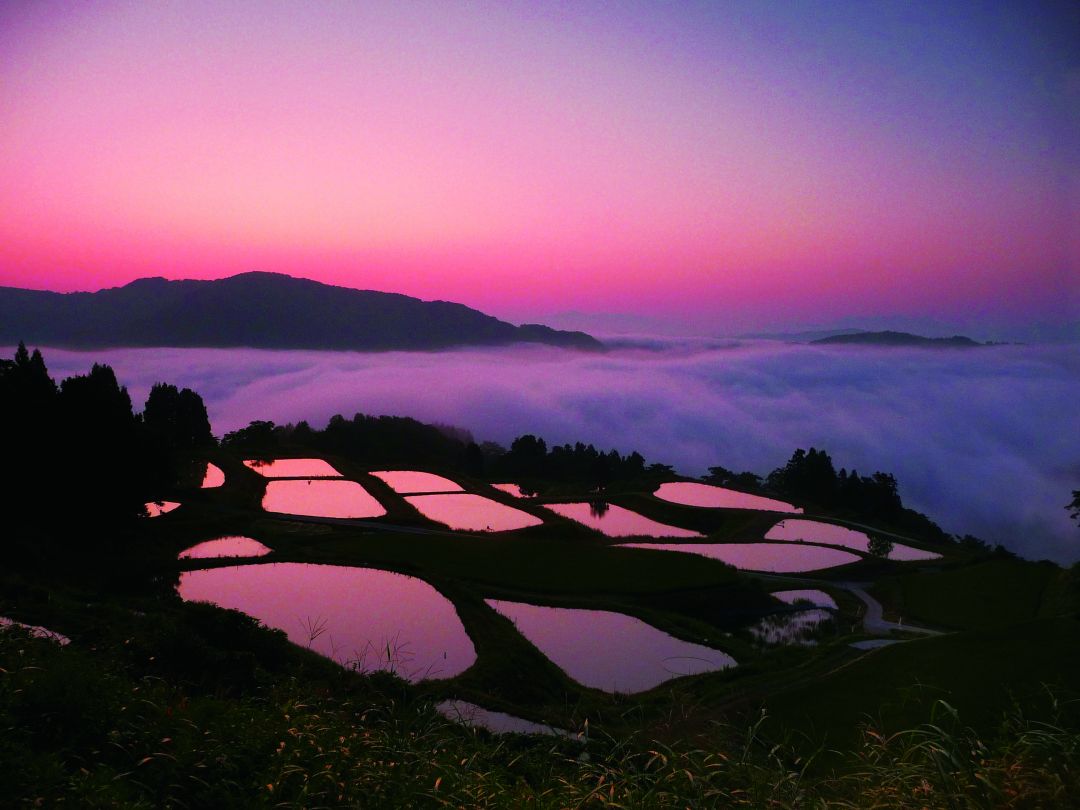
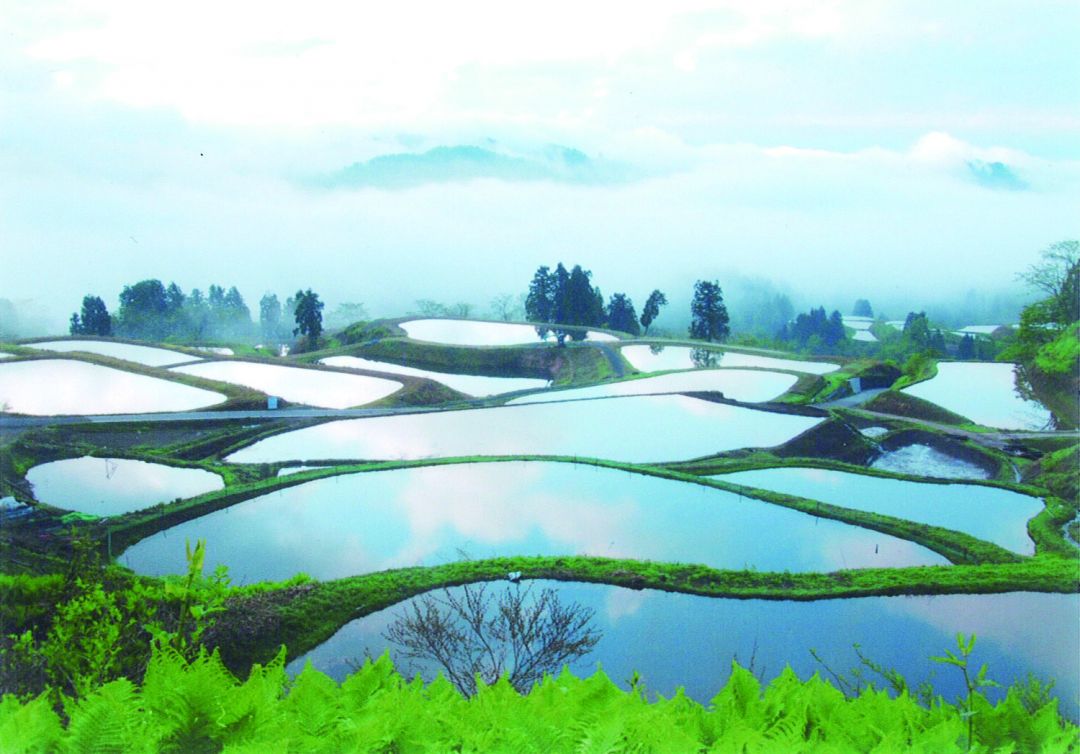
■ About the rice terraces of Yamakoshi
Ornamental Carp Breeding in Yamakoshi
Yamakoshi has long been known for breeding and raising nishikigoi, multicolored ornamental carp considered beautiful enough to be called “living jewels.” The practice eventually spread across Japan and led to the creation of an international industry worth billions of yen. Of more than 150 nishikigoi breeders in the Nagaoka region, approximately 90 commercial and hobby farms are based in Yamakoshi. Many people visit each year to buy carp from breeders dedicated to the highest standards of care and quality. Usually, farms require visitors to make an appointment, but the terraced rice fields and the ponds where some of the nishikigoi are raised can be seen throughout Yamakoshi.

The terraced rice fields and the ponds where some of the nishikigoi are raised .
Where to See Nishikigoi and Terraced Rice Fields
Large, brightly colored carp can be seen swimming in a pool outside the Yamakoshi Branch Office of Nagaoka City Hall and in an aquarium inside the neighboring Orataru Culture Exchange Center. An illustrated guide provided on the Orataru Center aquarium shows the many officially recognized color variations of nishikigoi.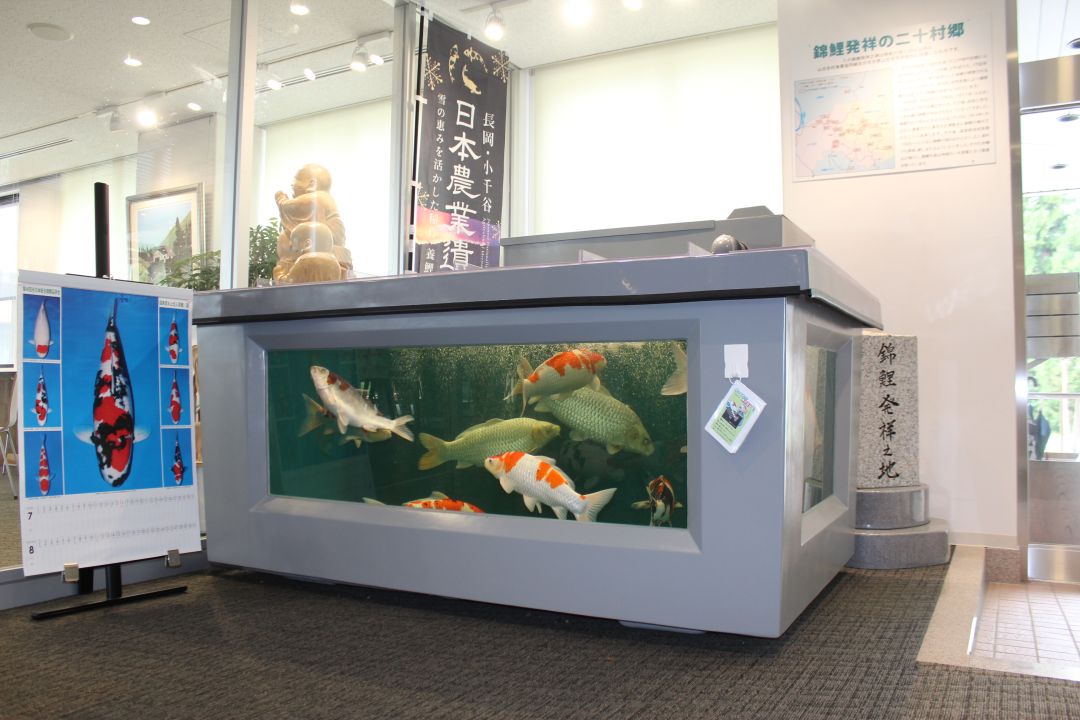
An aquarium inside the Orataru Culture Exchange Center
At present, nishikigoi are raised on numerous dedicated farms throughout the area, but ponds among the terraced rice paddies are still used for keeping koi in the summer, as in centuries past. Designated viewing areas around Yamakoshi overlook the scenery of rice fields and ponds, which is especially impressive in early summer when colorful sunsets reflect off the water. In addition to Yakushi no Oka, other popular locations are Nikoniko Hiroba, a viewing area behind the Yamakoshi Branch Office, and Ipponsugi near the Koshi Kogen Ski Area.
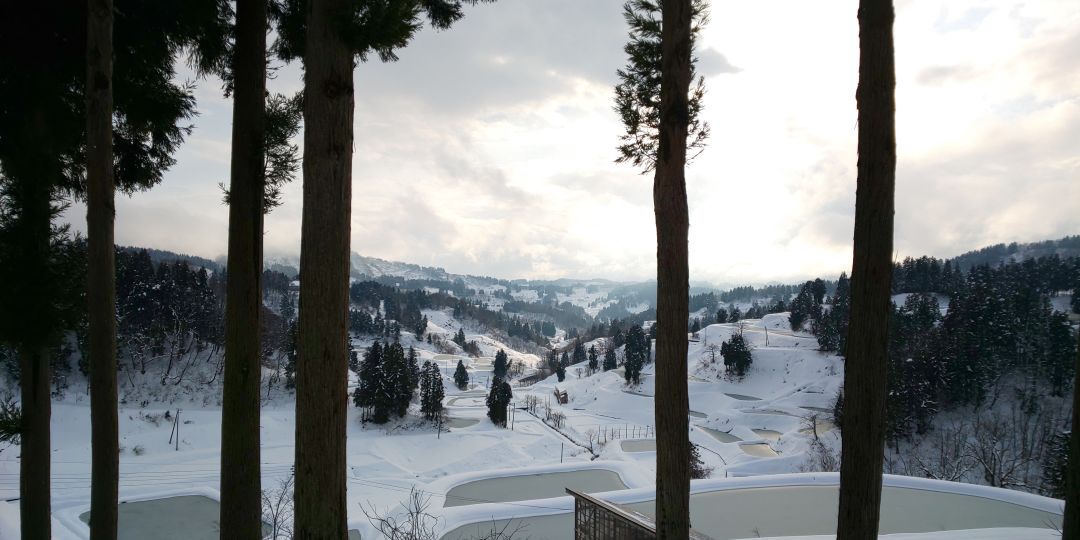
Nikoniko Hiroba
The History of Nishikigoi Breeding in Yamakoshi
The practice of breeding nishikigoi (literally “brocaded carp”) in Yamakoshi began approximately two centuries ago. Originally, villagers raised plain black magoi carp as a winter food source. The fish eggs were placed in terraced rice paddies in spring to spawn and mature among the rice plants. Once the carp reached a certain size, they were moved to dedicated ponds on the terraces and then transferred to protected household ponds before snowfall. It is said that a fish with red patterning was discovered among the black magoi and used for breeding sometime in the early nineteenth century. In the years since, selective breeding has resulted in approximately 100 different color variations of decorative nishikigoi.
The nishikigoi of Yamakoshi became known throughout the country after the Tokyo Taisho Exhibition held in 1914. In 1916, breeders found a way to produce a greater variety of colors and patterns through hybrid crossbreeding. Over time, Yamakoshi nishikigoi gained a following among buyers and koi hobbyists abroad, and Yamakoshi breeders were among the first in Japan to sell their carp internationally. Farms in Yamakoshi were heavily damaged in the 2004 Chuetsu earthquake in Niigata Prefecture, but nishikigoi breeders managed to rebuild and revive their businesses with the assistance of other breeders and koi enthusiasts across the country. Today, Yamakoshi nishikigoi are considered prized additions to fish ponds throughout the world. During the selling season, the mountain village becomes a bustling marketplace as potential buyers arrive from across the globe to choose their own “living jewels.”
*This English-language text was created by the Japan Tourism Agency.
Top page